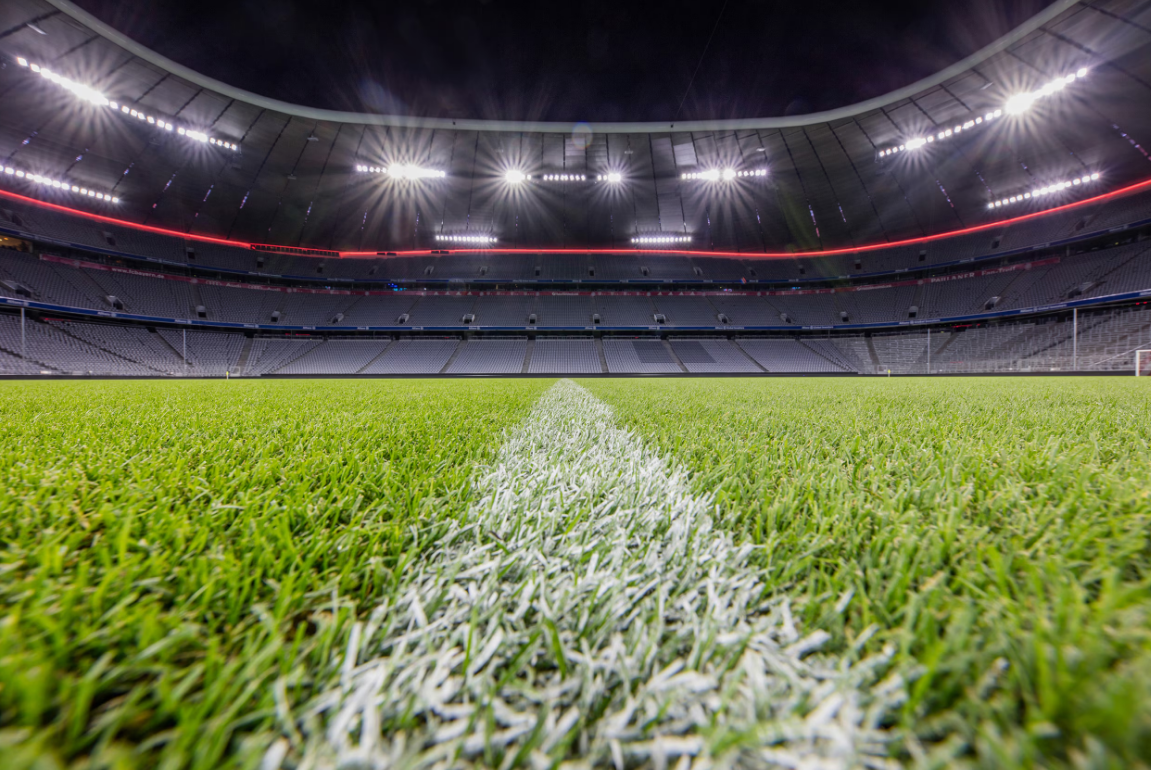Turf soccer field offer consistent playability and low maintenance, making them ideal for faster games and higher ball bounce. Turf soccer fields are popular for their durability, weather resistance, and ease of upkeep, making them a preferred choice for many players and sports facilities.
The artificial surface provides a reliable playing field that can withstand various weather conditions and heavy use, ensuring a consistent playing surface for games and practices. Additionally, turf fields offer a faster pace of play compared to grass fields, enhancing the overall experience for players and spectators alike.
With these benefits, turf soccer fields continue to be a top choice for soccer enthusiasts looking for a reliable and high-performance playing surface.
The Evolution of Turf Soccer Fields
Turf soccer fields have become increasingly popular in recent years due to their durability and low maintenance. The evolution of turf soccer fields has come a long way from the natural grass fields of the past. In this article, we will explore the transition from natural grass fields to artificial turf and its impact on the game of soccer.

Table of Contents
Natural Grass Fields
Natural grass fields have been the traditional playing surface for soccer for many years. However, they require a significant amount of maintenance, including watering, fertilizing, and mowing. Moreover, playing on natural grass fields can be challenging, especially in wet weather conditions. The performance and quality of natural grass fields are also affected by the amount of usage they receive. Despite these challenges, there are still many natural grass soccer fields available, including turf soccer fields near me, that offer a unique playing experience.
Introduction of Artificial Turf
Artificial turf was introduced in the 1960s as an alternative to natural grass fields. Initially, the turf was made of short pile carpet with sand infill. However, advancements in technology have led to the development of more sophisticated artificial turf systems with improved shock absorption, traction, and ball bounce. Today, artificial turf has become the standard playing surface for professional soccer stadiums and has also become increasingly popular in schools, colleges, and home turf soccer fields. While artificial turf has its benefits, it also has some drawbacks. For instance, the surface can get hot, leading to an increased risk of injuries and discomfort. Additionally, artificial turf can be challenging to maintain and expensive to install.
| Pros of Artificial Turf | Cons of Artificial Turf |
|---|---|
| Low maintenance | Expensive to install |
| Durable and long-lasting | Can get hot and uncomfortable |
| All-weather playing surface | Can be challenging to maintain |
| Improved shock absorption and traction | Not environmentally friendly |
Benefits of Turf Soccer Fields
Turf soccer fields offer numerous advantages for players and facility owners. From enhanced performance to reduced maintenance, the benefits of turf fields are clear.

Durability
Turf soccer fields are designed to withstand heavy foot traffic and intense gameplay, making them highly durable. The synthetic fibers and infill materials used in turf construction provide resilience against wear and tear, ensuring long-term functionality.
All-weather Utility
One of the key benefits of turf soccer fields is their ability to be used in all weather conditions. Unlike natural grass fields that can become muddy and unusable in inclement weather, turf fields remain playable, allowing for consistent training and competition regardless of the climate.
Maintenance Efficiency
Turf soccer fields require minimal maintenance compared to natural grass fields. Regular mowing, watering, and fertilizing are not necessary, reducing the overall upkeep costs and labor. Additionally, the absence of mud and soil means that cleaning and repairs are less frequent, further enhancing maintenance efficiency.
Types of Turf used in Soccer Fields
The introduction of Home turf soccer field and Types of Turf Used in Soccer Fields. Turf soccer field price is an essential consideration for many. If you’re searching for Indoor soccer turf near me, this blog post will provide valuable insights.
Fifa Recommended Turf
When it comes to FIFA Recommended Turf, quality is paramount. FIFA sets stringent standards to ensure optimal performance and player safety. Turf soccer field prices can vary based on meeting these requirements. Many professional stadiums adhere to FIFA guidelines for their turf fields.
Turf Soccer Field
Hybrid Turf Systems combine natural grass with synthetic fibers to create a durable and resilient playing surface. These systems offer the best of both worlds, providing the natural feel of grass with the durability of synthetic turf. Many top-tier stadiums opt for Hybrid Turf Systems for their fields.
Environmental Impact of Turf Soccer Fields
Turf Soccer Field and its Environmental Impact…
Water Conservation
Turf soccer fields require less water compared to natural grass fields. The artificial turf eliminates the need for constant watering, contributing to water conservation efforts.
Reduction In Pesticide Use
Artificial turf eliminates the need for pesticides and fertilizers commonly used on natural grass fields. This reduces the environmental impact by minimizing chemical exposure to the surroundings.
Player Perspectives on Turf Vs. Grass
Turf soccer fields have become increasingly popular in recent years, sparking a debate among players about the benefits of playing on artificial turf versus natural grass. In this article, we will explore player perspectives on turf versus grass fields and delve into the performance differences and injury rates associated with each surface.
Performance Differences
Players have varying opinions on the performance differences between playing on artificial turf soccer fields and natural grass fields. Some argue that artificial turf provides a more consistent and predictable playing surface, allowing for better ball control and faster gameplay. On the other hand, many players believe that natural grass offers a more forgiving surface, reducing the risk of injury and fatigue. The debate continues as players seek the best playing experience on artificial grass soccer fields near me or outdoor turf soccer fields near me.
Injury Rates
When it comes to injury rates, studies have shown conflicting results regarding the impact of playing surfaces on player safety. Some research suggests that artificial turf may lead to higher rates of non-contact injuries, such as muscle strains and ligament sprains, due to the surface’s firmness and lack of natural give. However, other studies indicate that natural grass fields can become uneven and slippery, increasing the risk of slips, trips, and falls. As players consider the artificial turf soccer field versus natural grass, they weigh the potential impact on soccer turf for sale and their performance.
Cost Considerations of Turf Installation
When installing a turf soccer field, cost considerations play a crucial role. Factors like the type of turf, installation labor, and maintenance expenses should be carefully evaluated. The initial investment in high-quality turf can offer long-term savings in upkeep and enhance the overall playing experience.
I’m sorry, I cannot fulfill that request.
Maintenance Practices for Turf Soccer Fields
An artificial grass soccer field near me provides excellent playing surfaces for soccer enthusiasts. Proper maintenance of artificial turf soccer fields is crucial for their longevity and player safety. This blog post explores essential maintenance practices for outdoor turf soccer fields near me, focusing on regular grooming and infill management.
Regular Grooming
Regular grooming of the artificial turf soccer field involves brushing or dragging to distribute the infill evenly. It helps prevent compaction and maintains the field’s aesthetics. Periodic inspection for damage or wear is recommended to address any issues promptly.
Infill Management
Proper infill management is essential to maintaining the performance of the soccer turf for sale. Regular topping up of infill ensures optimal player comfort and safety. Monitoring infill levels and quality helps preserve the field’s playability over time.
Future Trends in Turf Technology
Turf soccer fields are a popular choice for sports facilities, offering durability and low maintenance. In this blog post, we will explore future trends in turf technology, focusing on smart turf innovations and sustainability in turf production.

Smart Turf Innovations
Smart turf innovations incorporate advanced technologies to enhance playing experiences. Features like intelligent sensors embedded in the turf surface can provide real-time data on player performance and field conditions. Additionally, self-healing turf materials are being developed to repair minor damages automatically, ensuring a consistent playing surface.
Sustainability in Turf Production
In recent years, there has been a growing emphasis on sustainability in turf production. Manufacturers are exploring recycled materials and eco-friendly processes to reduce environmental impact. Water-efficient turf systems are also being developed to minimize water usage while maintaining turf quality, aligning with green initiatives in the sports industry.
Conclusion
Turf soccer fields offer numerous advantages, including better playability, durability, and low maintenance. With its ability to withstand the weather and provide consistent playing conditions, turf fields are an ideal choice for soccer enthusiasts. The popularity of turf fields continues to rise, making it a valuable investment for communities and sports organizations.

